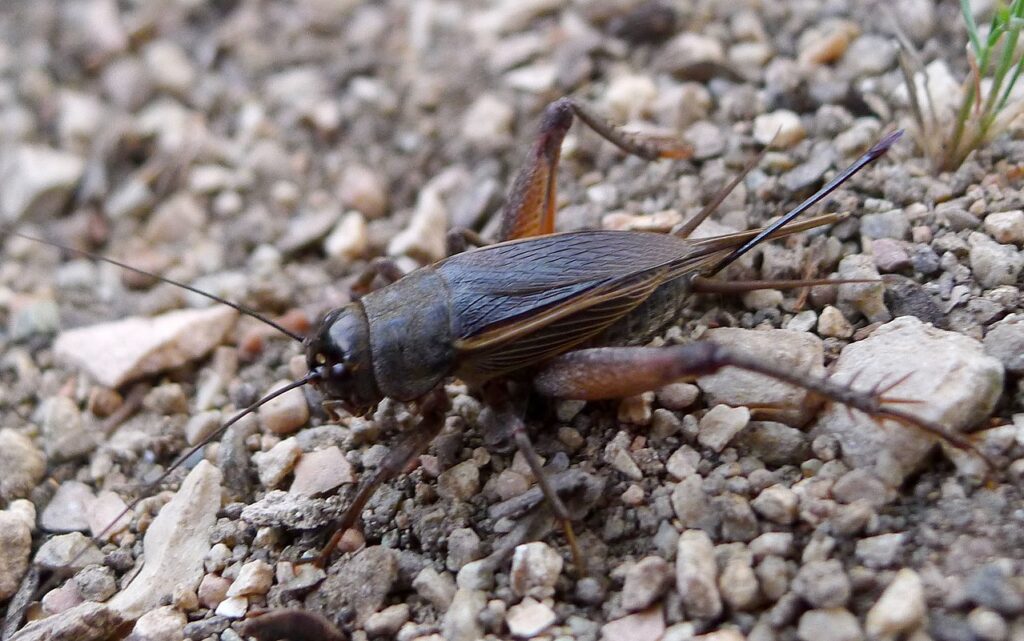Field Crickets

Biology
Field cricket control is essential for maintaining a pest-free environment, as these insects commonly inhabit the United States. Field crickets range from one-half to one inch in length, displaying colors that vary from black to dark brown. Their antennae extend much longer than their bodies. You can easily distinguish males from females, as males have only two spear-like appendages protruding from the tip of their abdomen, while females possess three such appendages. The middle rear appendages of females serve as a stiff, tubular ovipositor through which they lay eggs. Field crickets also have well-developed wings, allowing them to fly and jump effectively.
Field crickets overwinter in the egg stage or as nymphs. Nymphs mature into adults in May or June and typically die by July. Those that overwinter as eggs develop into adults by mid-summer and die in the fall. Females reaching adulthood in mid-summer begin laying eggs in damp areas of the ground after a few weeks, restarting the life cycle. They lay between 150 and 400 eggs singly at shallow depths. In warmer areas of the country (the Gulf states and desert southwest), field crickets may actively breed year-round, producing up to three generations in a single year.
Field Cricket Control
Field crickets can cause significant chewing damage to vegetables and ornamental plants in your yard. Indoors, they chew holes in a wide range of fabrics, including cotton, wool, silk, and furs. Clothing and paper soiled with perspiration, food, or grease attract them more readily. Effective field cricket control is essential, as these pests frequently invade homes in larger numbers than any other species. Massive outbreaks can occur in the Midwest, desert southwest, and the interior valleys of California. During such times, they may impede city traffic and wreak havoc inside homes, restaurants, motels, and office buildings. However, field crickets that wander indoors cannot survive long and typically die off by late fall or early winter. For targeted solutions and strategies to manage cricket infestations, check out our detailed Cricket Control page.
FAQs about Field Crickets
1. Are field crickets harmful to humans?
Field crickets are not directly harmful to humans but can cause damage to fabrics and food sources.
2. How can I prevent field crickets from entering my home?
To deter field crickets, ensure that all openings, including windows and doors, remain tightly sealed. Remove potential hiding spots, such as clutter and debris around the house.
3. What attracts field crickets?
Field crickets are drawn to food sources, moisture, and dark areas, making kitchens and basements common hotspots.
4. Can field crickets survive in my home?
Although field crickets can enter homes in large numbers, they typically do not survive long because the indoor environment is less favorable for them.
5. Where can I find more information about field crickets?
For further details on field crickets and their management, check out this resource from the University of Florida: Field Crickets, Gryllus spp.
